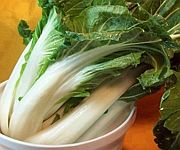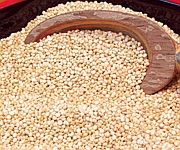 This grain is very high in protein and contains amino acids which are not normally found in other grains. This healthy food can be ground into a gluten and wheat-free flour or added to soups to give it a thicker texture. Amaranth is full of vitamins, minerals and is rich in fiber content as well. This grain is very high in protein and contains amino acids which are not normally found in other grains. This healthy food can be ground into a gluten and wheat-free flour or added to soups to give it a thicker texture. Amaranth is full of vitamins, minerals and is rich in fiber content as well.
2.) Aronia berry
The Aronia berry is sometimes known as the chokeberry since it is a very tart berry that most do not eat without sweetening it first. These berries look similar to blueberries but beat them hands down in the levels of antioxidants they contain. This fruit is very popular in Eastern Europe where it is a tasty drink that can help those with heart conditions.
These berries also come packed with vitamins and minerals and may even provide protection against certain types of cancer such as colon cancer. When these berries are sweetened they have been reported to taste like a mixture of blackberries and blueberries.
3.) Bok Choy
Bok Choy or Chinese white cabbage is a vegetable that is commonly found in wonton soup and stir fry recipes and has a mild sweetness to it. Bok Choy can be found in grocery stores all year around. It is loaded with an array of vitamins and also powerful antioxidants as well as calcium and much-needed fiber.
We are hearing more and more about the importance of a diet rich with fiber and that most of us do not get enough on a daily basis. With the high amount of beta-carotene in this healthy vegetable, it can help to decrease the risk of certain cancers as well as cataracts.
4.) Jicama
Jicama is a sweet vegetable which has a light and crunchy consistency. It almost looks like a large potato or yam and can be eaten either cooked or even raw, and can also be deep fried as a healthy alternative to French fries. It can be cut into strips and added to fruit and vegetable platters.
Jicama is rich in calcium, fiber and vitamins. It can help keep cholesterol levels down and may also protect against heart disease. It can also boost your immune system and helps protect against the common cold and the flu.
5.) Quinoa
Quinoa is a seed which is also a source of complex carbohydrates with a low glycemic index. It can be eaten at almost any meal and delivers plenty of vitamins and minerals and packs a powerful punch of protein, even more so than in a protein rich egg. A cup of quinoa has nine grams of protein while an egg only has six grams.
It also has all eight of the essential amino acids. Quinoa also contains plant-derived calcium and in just one cup of cooked quinoa there is thirty milligrams of much-needed calcium. Quinoa is gluten free and can be enjoyed by people who suffer from certain digestive disorders.
6.) Purslane
Purslane is a green leafy vegetable that is packed with plenty of vitamins and minerals as well as dietary fiber. The leaves amazingly even have Omega 3 fatty acids (even more than in some fish oils) which can help to reduce the risk of coronary heart disease and strokes. This can be a nice change from thinking you must always turn to fish for these healthy Omega 3 fatty acids.
This food can be used in salads, stew and vegetable juices. Just a side note-the stems and flower buds are edible but remember to trim the tough stems at their roots. When shopping for purslane, carefully make sure there are no dark or yellow spots or even mold. Eat them when the leaves are fresh and not wilted. They should remain fresh for a few days in your refrigerator.
About the Author
|


